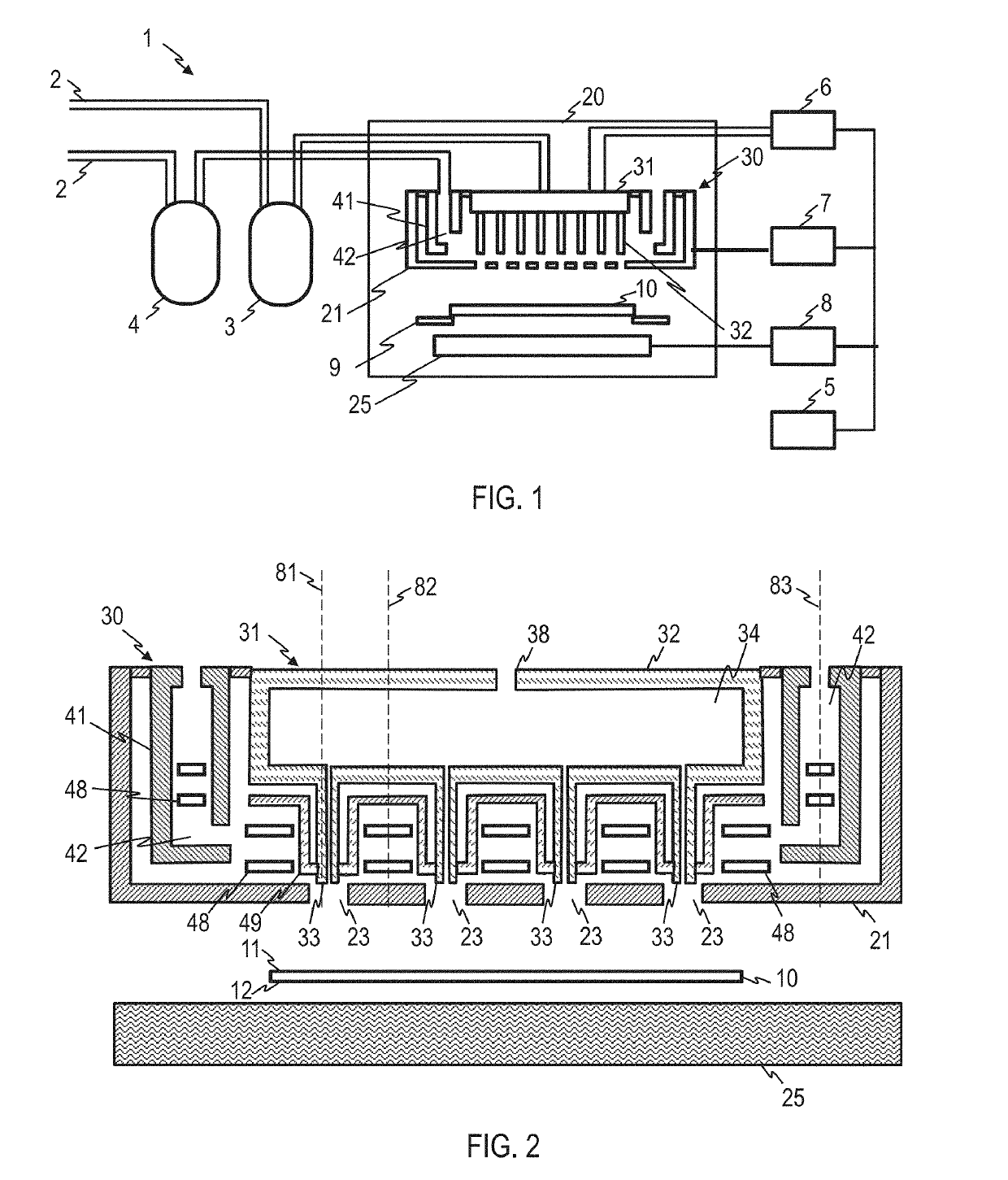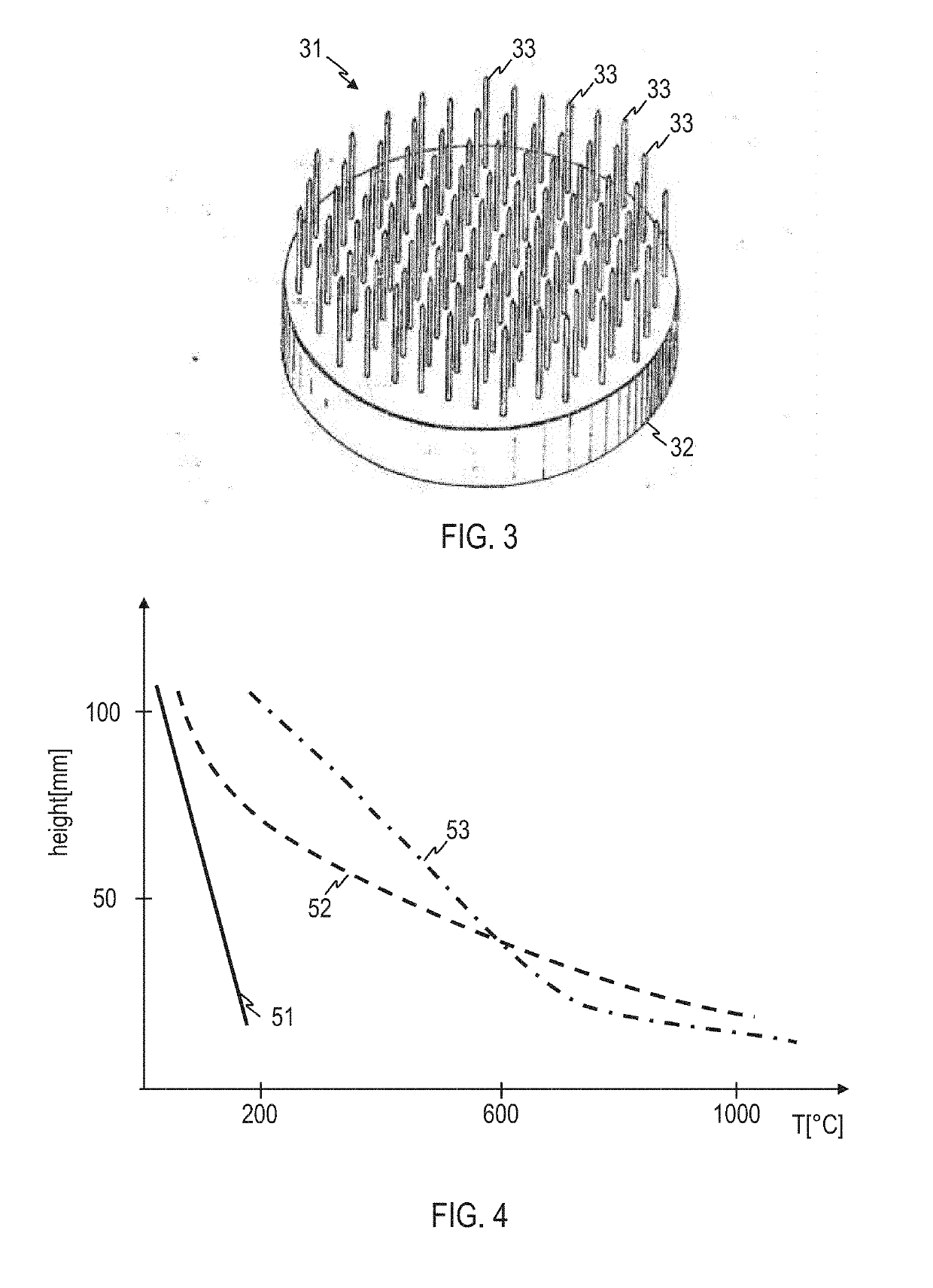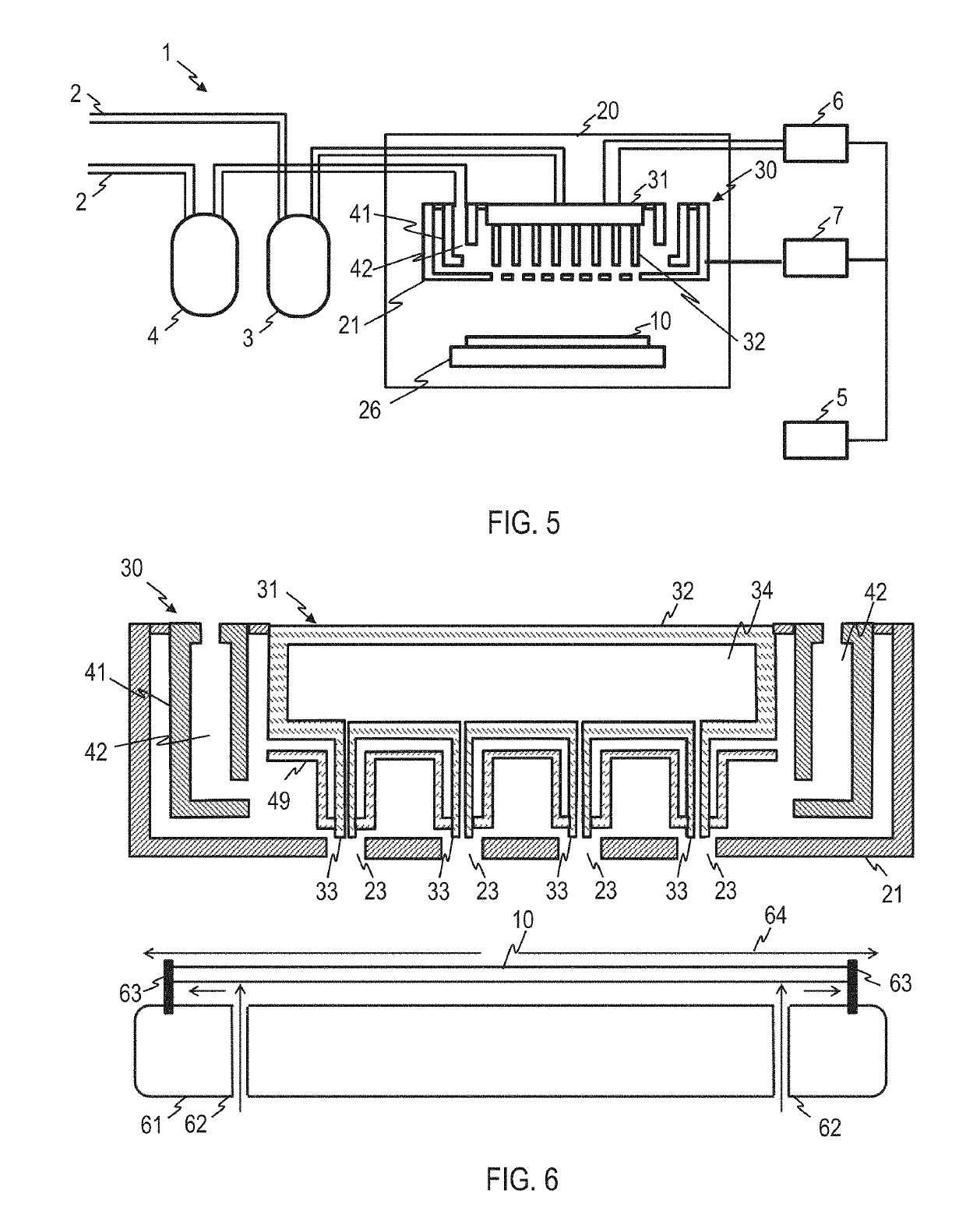System and method for gas phase deposition
a technology of gas phase deposition and substrate, which is applied in the direction of electric discharge tubes, coatings, metal material coating processes, etc., can solve the problems of reduced adhesion, degradation of the whole structure, and the grown layer cannot inherit a proper crystalline structure, so as to achieve enhanced control over the gas phase deposition process, good adhesion, and rapid change of process parameters
- Summary
- Abstract
- Description
- Claims
- Application Information
AI Technical Summary
Benefits of technology
Problems solved by technology
Method used
Image
Examples
Embodiment Construction
[0110]Preferred embodiments of the disclosure will be described with reference to the drawings in which identical or similar reference numerals designate identical or similar elements. The features of the various embodiments may be combined with each other unless explicitly stated otherwise. While some embodiments are described in the context of Metalorganic Vapour Phase Epitaxy (MOVPE) or Metalorganic Chemical Vapour Deposition (MOCVD), the gas phase deposition systems and gas phase deposition methods according to embodiments are not limited thereto.
[0111]FIG. 1 shows a system 1 for gas phase deposition according to a preferred embodiment. FIG. 2 shows an enlarged partial cross-sectional view of the gas injector and other components of the system 1.
[0112]The system 1 is operative to deposit one or several different materials onto a substrate 10 in a process chamber 20. The process chamber 20 may be a reactor. As will be explained in more detail below, the system 1 is configured in ...
PUM
| Property | Measurement | Unit |
|---|---|---|
| inner diameter | aaaaa | aaaaa |
| inner diameter | aaaaa | aaaaa |
| pressures | aaaaa | aaaaa |
Abstract
Description
Claims
Application Information
 Login to View More
Login to View More - R&D
- Intellectual Property
- Life Sciences
- Materials
- Tech Scout
- Unparalleled Data Quality
- Higher Quality Content
- 60% Fewer Hallucinations
Browse by: Latest US Patents, China's latest patents, Technical Efficacy Thesaurus, Application Domain, Technology Topic, Popular Technical Reports.
© 2025 PatSnap. All rights reserved.Legal|Privacy policy|Modern Slavery Act Transparency Statement|Sitemap|About US| Contact US: help@patsnap.com



